Outriders mixes superpowers, shooting, and Destiny
More mature than Bulletstorm, Outriders still channels Polish goofiness for an interesting shooter-RPG.
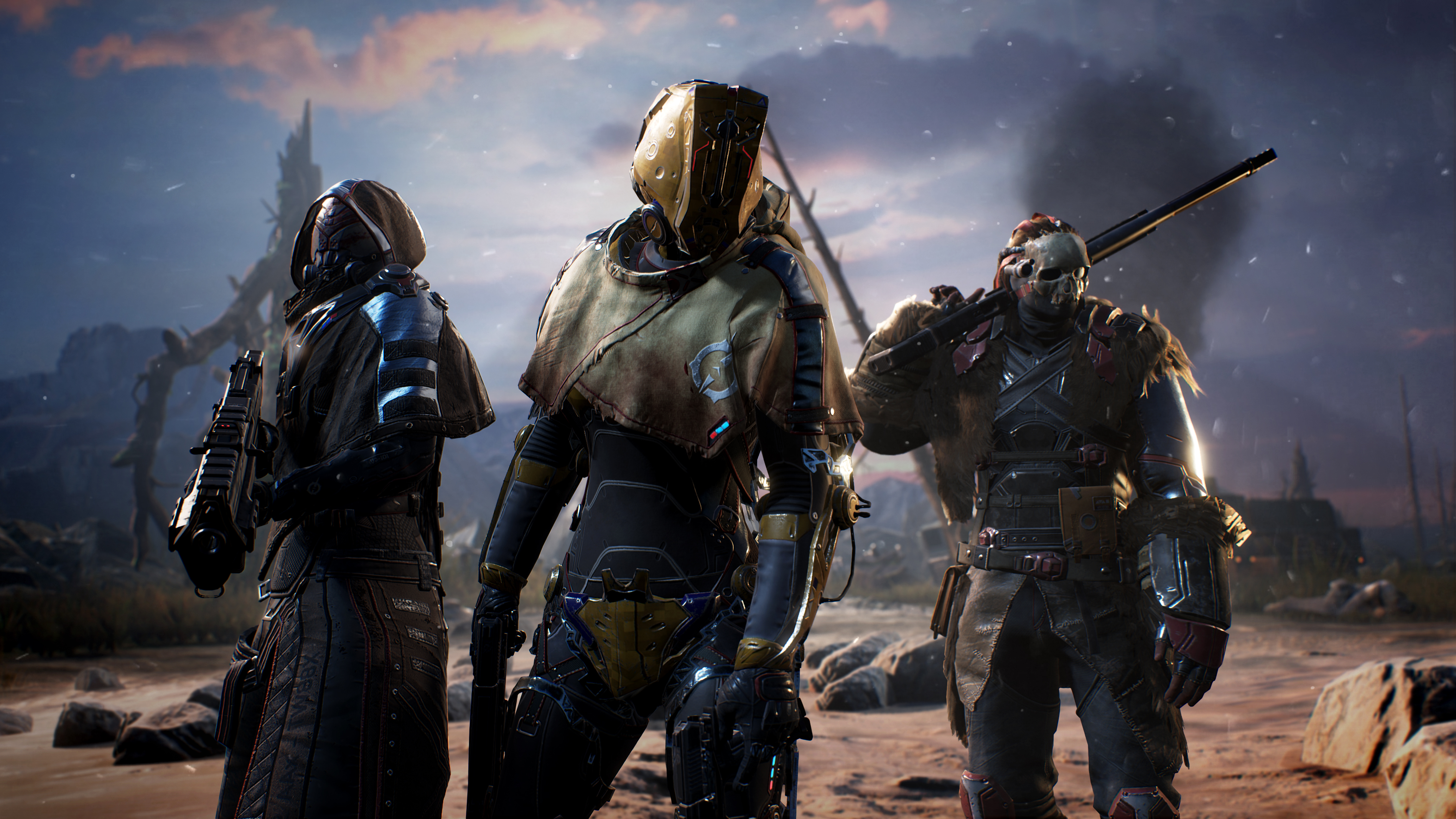
Imagine having to follow up a game where the catchphrase “son of a dick” was coined. This is the task of People Can Fly, makers of the memorably crude Bulletstorm, with their first new game since Gears of War: Judgment.
Some of the faces behind Bulletstorm are still kicking around at People Can Fly. Art director Bartosz Bieluszko (a character artist on Bulletstorm), design director Piotr Nowakowski (level designer) and senior narrative designer Szymon Barchan (another level designer) are all lending their talents. Two core members of the team, director Bartosz Kmita and lead writer Joshua Rubin, signed on after Bulletstorm’s time, and from what I can tell, they’re eager to set Outriders apart from what’s come before.
We were introduced to Outriders in a flashy E3 2019 CG trailer, and again in this week’s “reveal” trailer. After playing it for a few hours, Outriders manages to be the kind of 1-3 player co-op third-person shooter-RPG only People Can Fly could make: A fast-paced, super power-infused shooter that straddles grimdark and laughably ridiculous. The general running and gunning is more floaty, like a slightly more elegant Division (or a way less elegant Warframe). You’re getting into cover frequently, but you’re also running and jumping around like a maniac sometimes. You unlock one of four special classes’ abilities, allowing you to chain and combine moves that stun enemies and hurtle you across the battlefield for big area-of-effect attacks. It’s nowhere near as corny as Bulletstorm, but you can sense Outriders’ cast is, at any moment, just about to look over their shoulder and mutter “can you believe this shit?”
ABOVE: 20 minutes of gameplay from my session.
The setting is familiar enough: far in a future where Earth has evidently been laid to waste by some cataclysmic conflict. The survivors hurtle through space in search of a new home and stumble on the seemingly lush planet of Enoch. The members of the Outriders, a first-wave force of scouts, take their time surveying the landscape before things go catastrophically haywire.
You experience this firsthand in the narrative-led prologue of the game, a 30 minute gameplay intro. A toxic substance materializes in the planet's atmosphere, rendering all who touch it hideously sick, and a giant wave of energy pulses through the sky, bringing a deadly world-spanning storm with it, forcing you to dodge a massive series of lightning strikes. Your character sustains a serious injury, and is locked into a cryo tube for safekeeping. 30 long years later, you’re reawakened, only to realize that, in true People Can Fly fashion, the world has gone to hell, with a couple of factions vying for control over Enoch while nature still tears us all a new one. Even better, you and a handful of friends and foes can wield superpowers now. Fun!
It’s a darker tale than Bulletstorm, which featured deranged mutants and man-eating plants, but it’s not without some moments of humanity that help keep things grounded. Lead writer Joshua Rubin was inspired in part by both the lighter and darker sides of the country of Poland, where People Can Fly is based, just a stone’s throw from the region of Warsaw that the Nazis forced Jews into during the 1940’s, according to Rubin.
Keep up to date with the most important stories and the best deals, as picked by the PC Gamer team.
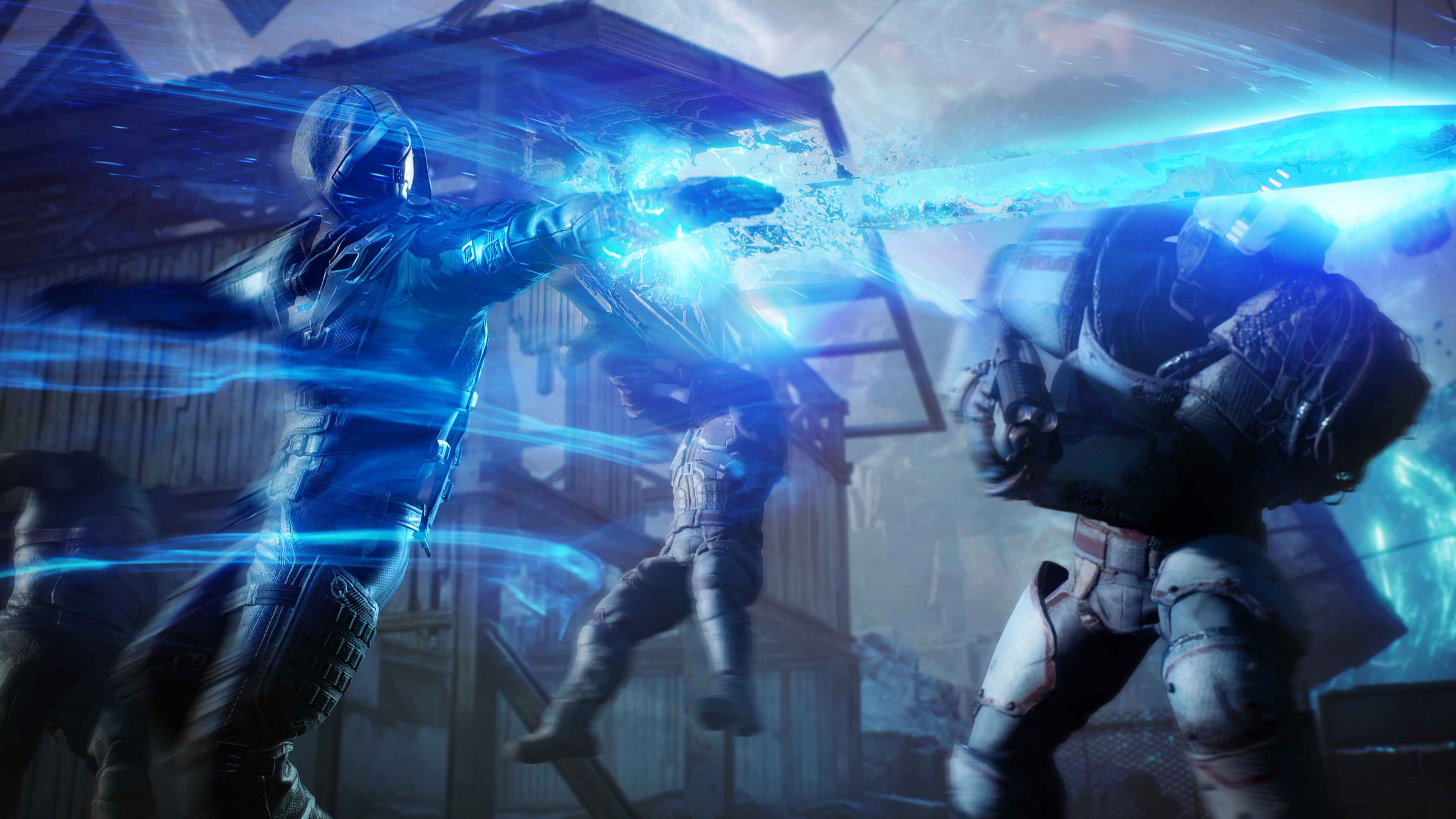
“I didn't know a lot about Polish history over the past 100 years,” Rubin said. “It's a pretty brutal history. It was powerful to be in that land. I'm Jewish. Being able to be there and breathe that air, feel the emotional weight of that land while simultaneously finding a way to channel some of that into this game. We wanted to say some pretty weighty things about humanity's inability to be human to each other, to see each other, to connect. The sense that this is a story about the last refugees of humanity trying to make a home together and failing miserably to do that.”
Playing a roughly two-hour demo of Outriders, it’s easy to see what he means. Immediately after thawing out of cryo, you’re thrown into bedlam. Crazed bandits are engaged in a heated battle with the less-crazed survivors, all while another energy storm begins to tear up trenches full of both sides. After a quick truck ride through the scene (and a tunnel of hanging corpses) we’re quickly abandoned and left to fend for ourselves.
At its core, Outriders sure feels like a typical third-person shooter. You run, you gun, and you duck behind cover. There's a lot of shared DNA with Gears of War, even if the general shooting and running around feels less weighty. I spent the first 20 minutes or so just diving from cover to cover in my escape attempt, mowing down dozens of generic grunts and a couple of flamethrower-wielding brutes. It’s not exactly thrilling, but hey, neither is the opening of most other shooter-RPGs. Speaking of the genre, you’ll definitely get some Destiny vibes from Outriders’ customization menu, where you can swap weapons, mods, armor, and abilities, but director Bartosz “Bartek” Kmita assures me that the game is a more straightforward campaign with a clearly defined beginning and end, with hub spaces in between, and it’s definitely not a service game. In fact, People Can Fly describes Outriders first and foremost as an RPG. That’s probably for the better anyway, because an alternate version of this game without superpowers would be painfully pedestrian.
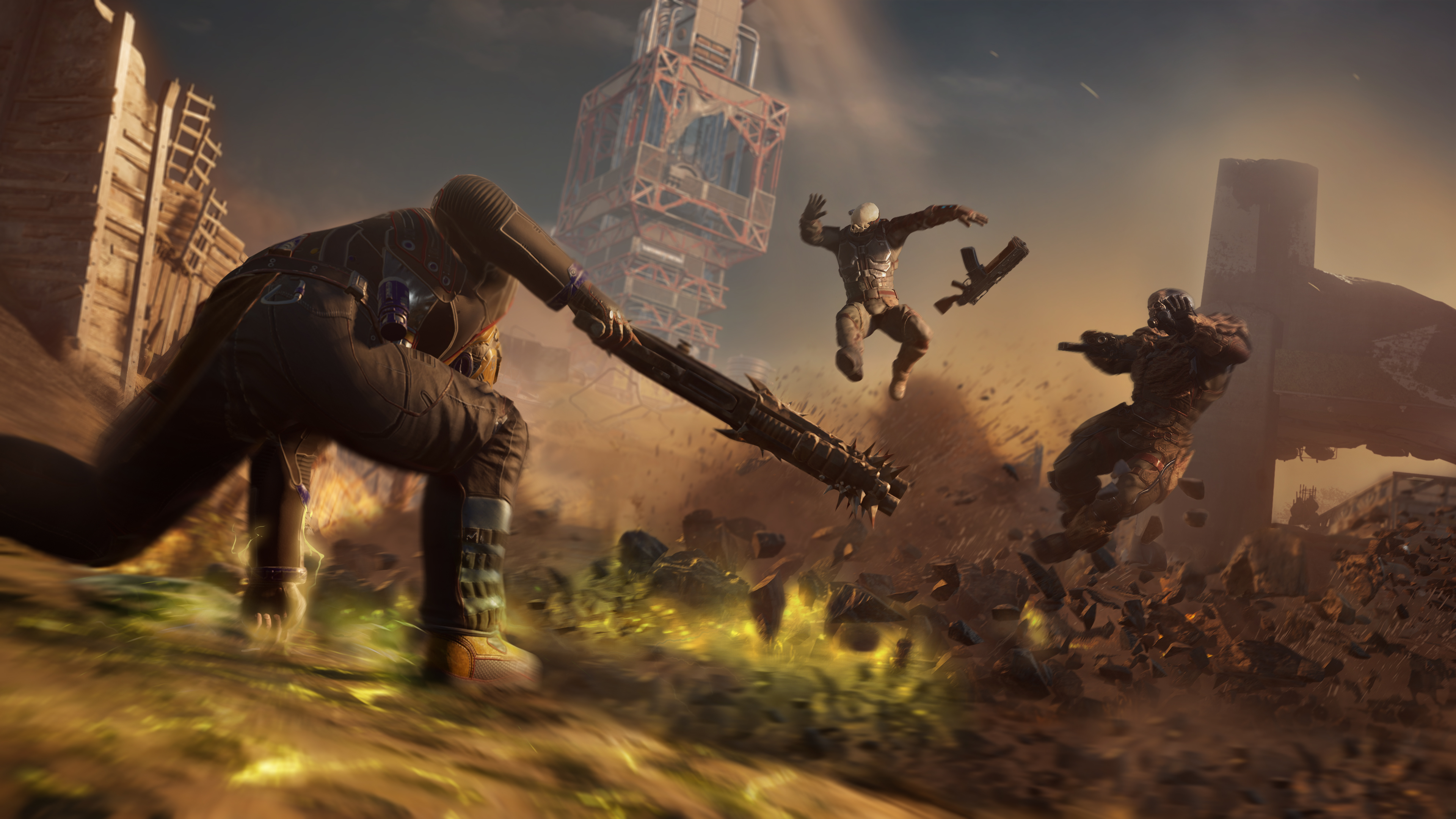
Outriders shows off some of that zanier Bulletstorm spirit when your powers awaken. You can choose between four special classes. There’s the Trickster, a hit-and-run specialist; a rogue-ish figure who can slow time for a group of enemies, teleport around them, and slash them all with their blade. I pick the tanky Devastator: A brutish variant who can cover their skin in rocks for added defense, stun enemies with a forward-facing ground pound, and launch into the air to hurtle across the battlefield to slam into distant enemies. The hook to the Pyromancer is pretty much in the name. They’re throwing up fire walls that flush enemies out of cover and turning enemies into ticking time bombs. For now, the fourth class is still a mystery. Whereas Bulletstorm felt like it was about whipping enemies around with physical stunts for bonus points, the real action of Outriders is getting out of cover, engaging with the enemy up close, and pouring damage all over them with your powers rather than sitting in cover and chipping away at health bars.
Power creep
It takes a bit of time in Outriders to get to where you’ll feel like an actual superhero, though. After finishing the game’s prologue, heavy on both story and basic shooting, I’m eager to take these powers for a test drive, now that I’ve unlocked three ability slots. After meeting up with the friendly (but now painfully older) faces of my old crew, I’m given a mission to search out a new signal emanating from a radio tower.
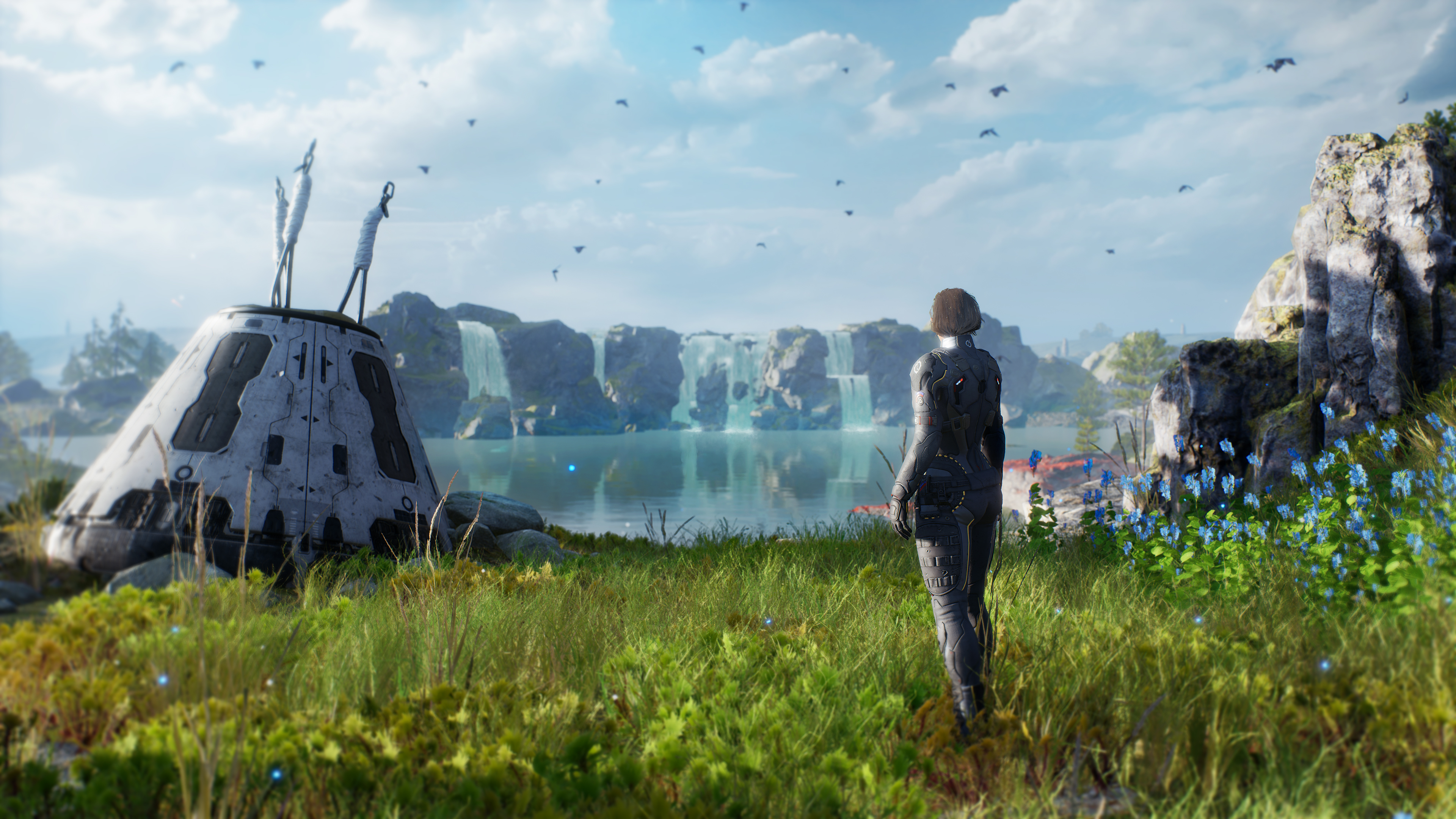
With my friend taking over the Trickster role and myself playing as the Devastator, we manage to combine our powers in a way that's more fun than what we individually started with. With the tower off in the distance, we make our way through some ruined trenches and hillsides, slowly shooting through a faction of crazed bandits. While my Trickster friend hangs back and pops off shots, I try to live up to being a tank and run straight into the fray, slamming my first into the ground, churning a length of earth in front of me, tripping up and damaging the couple of baddies who are tucked into cover. When a pack of axe-wielding guys rush in, I’m put on my back foot a bit, but I quickly escape by launching myself into the air with my third ability, quickly scoping out a much more vulnerable group that my friend has immobilized with her time-warp bubble, and I fly across the field to ground pound them into oblivion.
When I say that Outriders feels less weighty than something like Gears, I mean that you don’t feel like a 300 lb linebacker grunting your way from cover to cover. Early on, this kind of sucks, because you’re just a squishy guy shooting other squishy guys, combat rolling over and over. But that weightlessness finally comes into its own when you get all these powers, because suddenly you’re not confined to the earth.
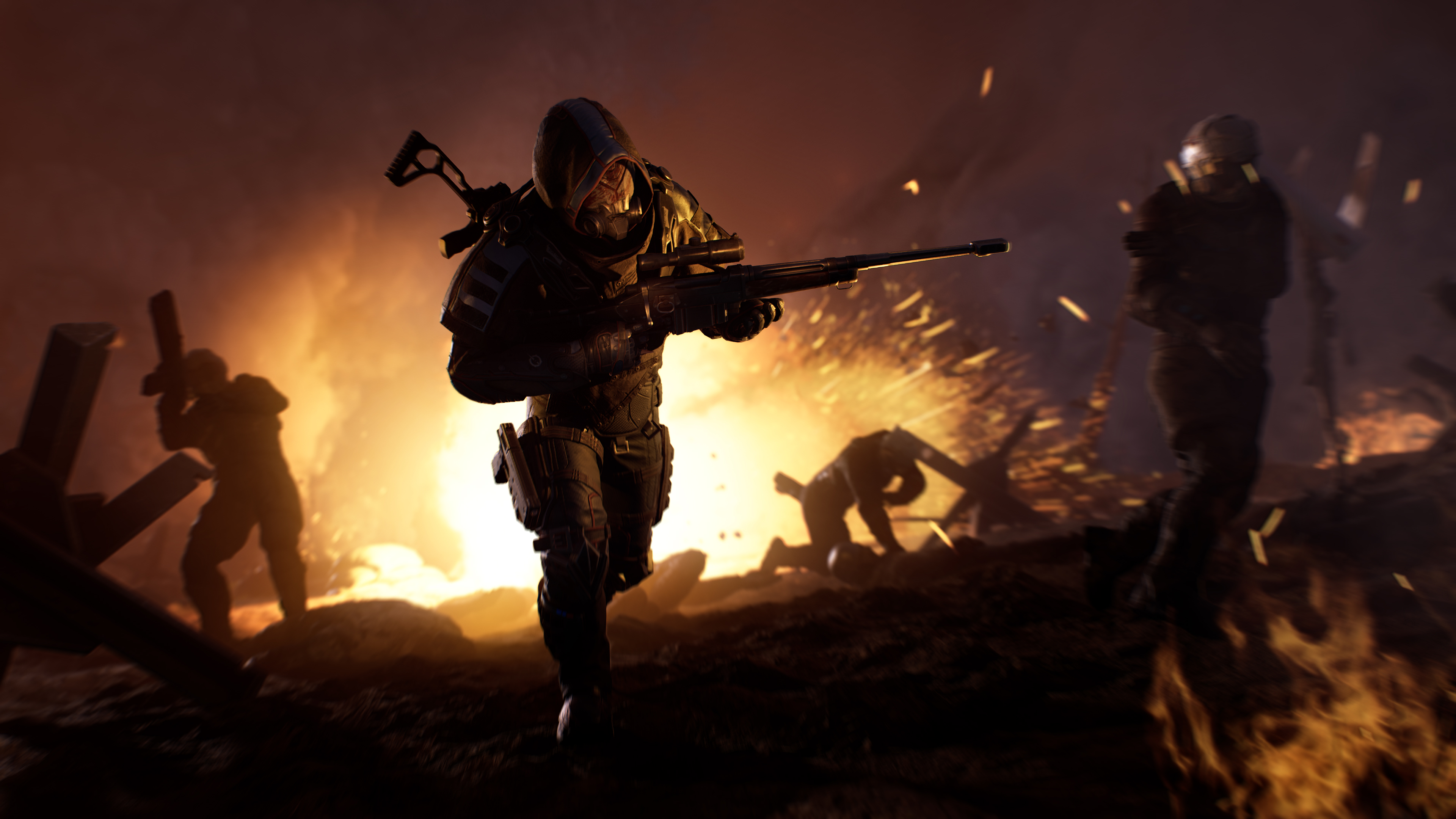
The shooting becomes a supplement, in other words, and I find myself trying to strategize what my next super move might be. My friend and I spy a group of 10 enemies trotting down a hill, and rather than pot-shotting them from our cover, I immediately perform my aerial ground pound, flying over their heads and coming in behind the majority of them. Sure, I’m surrounded now, but once I get my rock skin on, I’m a bigger threat than any gun they can fire, and they’re not getting away when my friend dives in to slow down time. That’s some good power fantasy right there, except for the couple of times my power absolutely refuses to highlight a viable enemy, and I simply crash back to the ground where I began. I was never quite sure if that was a bug or if my enemies had some sort of immunity, so hopefully People Can Fly can communicate things like that more clearly by release.
Though it is fantasy, at times, the world itself can be a bit drab. Though the developers tell me that Outriders isn’t a game about fighting in trenches all the time, these first couple hours definitely feel like it. It’s all the typical bombed-out bunkers and concrete structures, save for the prologue, which introduces us to a far lusher side of the planet Enoch, plus some aggressive wildlife (your garden variety alien bear-things) that I’m sure we’ll see more of. That said, People Can Fly is still quite good at making skyboxes and the broader environment feel expansive. The opening escape from your cryo chamber takes you through a war-torn battlefield, and you’re never going more than a couple minutes without a fantastic horizon to gawk at. Bulletstorm ultimately felt the same way.
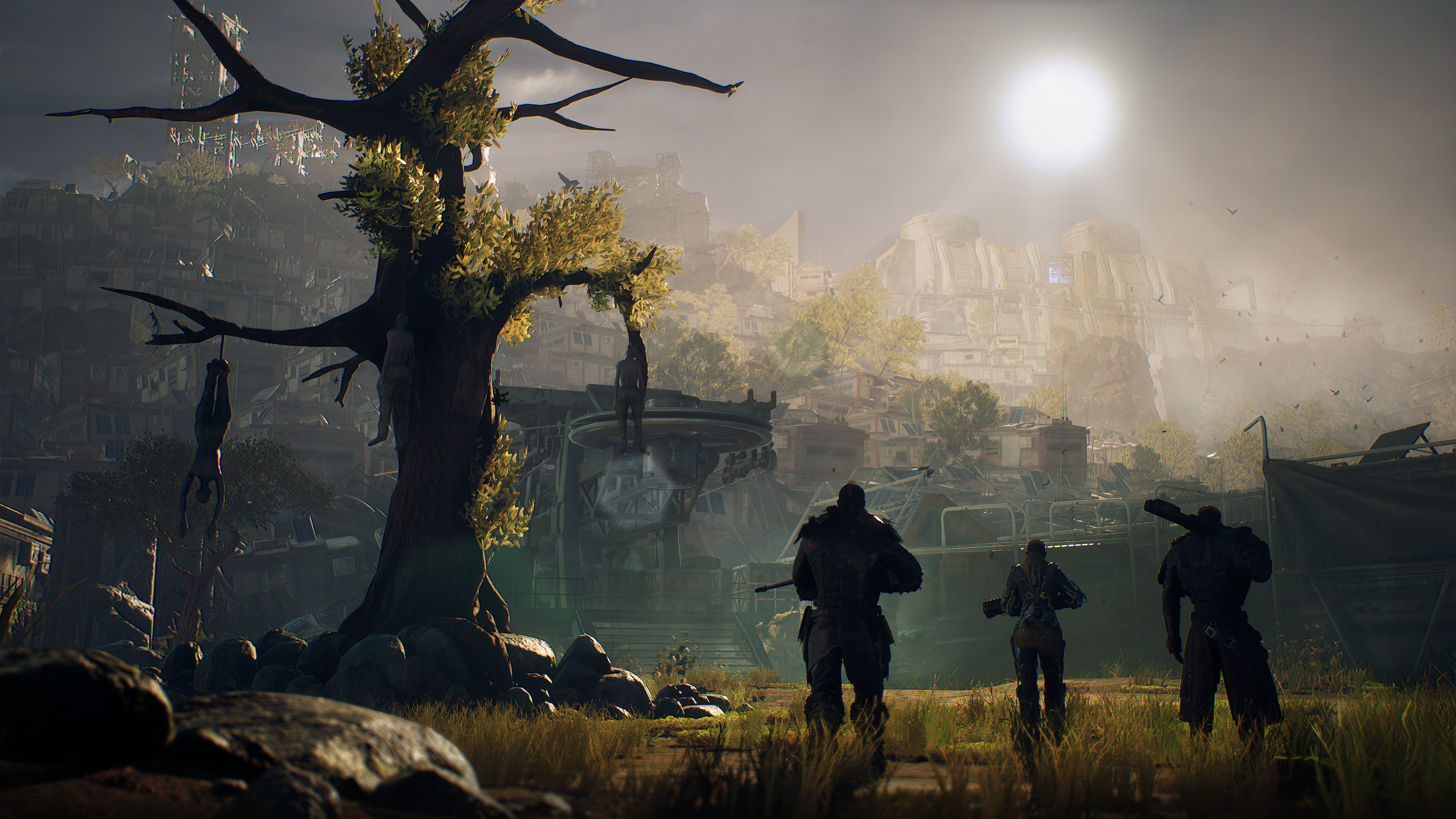
My time with Outriders culminates with a boss battle with one of the “Altered,” seemingly another human with access to supercharged powers. I'm forced into cover on the observation platform outside a massive radio tower, dodging his area-of-effect lighting strikes, searching for him when he teleports to a new location, and desperately trying to keep him from healing himself in a shield of sheet metal. The fight is tense, forcing my partner and I to ramp up the strategic communication, though that tension does wear thin as the fight drags on. We routinely fail to stop this boss from healing himself, resulting in a sort of stalemate. I later learn that my basic melee attack could actually break through his shield, which gives me traumatic flashbacks of Destiny’s first spider tank boss fight that drags on for a half-hour. I know something is wrong with how I’m playing, and it’s not great that one of the game’s developers has to course-correct me after a 20-minute brawl.
Outriders initially struck me as a little bland, but once the game opened up—giving me more powers, weapons, and chances to connect with a fun, if po-faced cast—things ultimately paid off. The mix of superpowers and shooting does feel a little at odds with its darker story, though. The game is at its best when it’s embracing these powers and how ludicrously overpowered they make each individual shootout feel, much like Bulletstorm’s slapstick whip-leash. People Can Fly promises us that this story of intergalactic refugees is going to go to some pretty messed up places, but I hope they continue to litter the world and action with those self-aware, goofier moments amid all the slaughter. For now, we definitely know we’re getting something way more self-serious from People Can Fly.
“There's a sense that everyone on this planet is a refugee, just as we are all refugees,” Rubin later tells me. “We are all where we are because our parents came from another place, or struggled through an incredible time to get here. There's the sense that so long as we fail to all see each other as humans, we'll always be fighting aliens.”
Outriders is landing sometime in late 2020.
Joseph Knoop is a freelance writer specializing in all things Fortnite at PC Gamer. Master of Creative Codes and Fortnite's weekly missions, Joe's always ready with a scoop on Boba Fett or John Wick or whoever the hell is coming to Fortnite this week. It's with a mix of relief and disappointment that he hasn't yet become a Fortnite skin himself. There's always next season...


